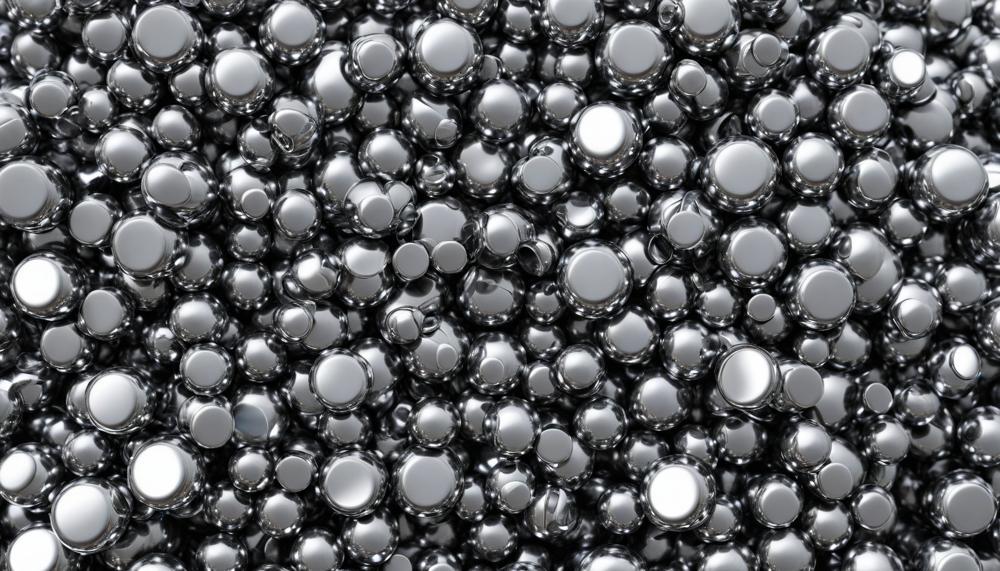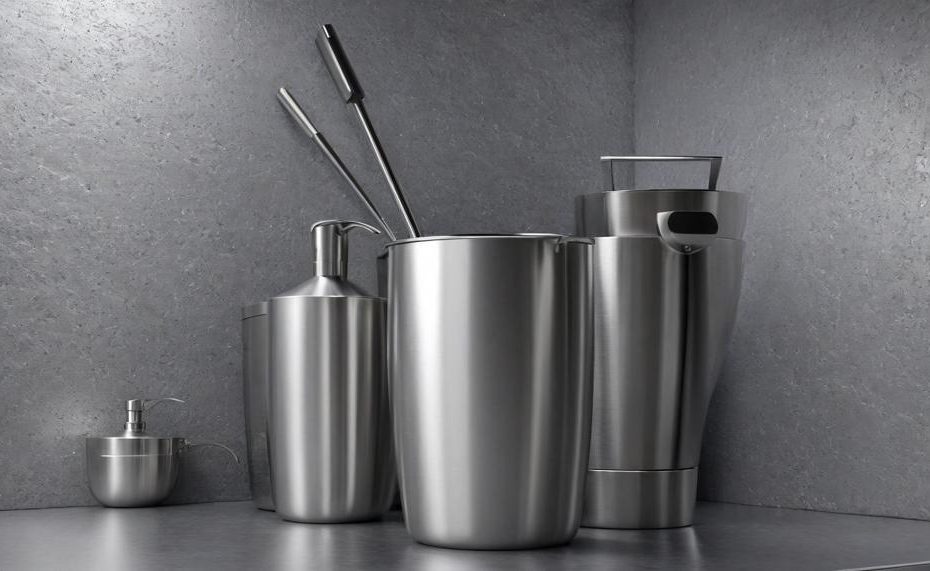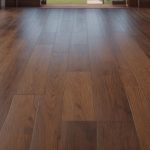Yes, you can use acetone on stainless steel. This versatile solvent, commonly found in nail polish remover and paint thinner, is effective for cleaning stubborn grease stains, fingerprints, and oil marks on stainless steel surfaces. However, a few key practices will ensure the process is both safe and effective.
Here are the essential takeaways for using acetone on stainless steel:
- Ventilation is crucial: Always work in a well-ventilated area. Open windows and doors to improve air circulation, minimizing the inhalation of fumes.
- Grain direction matters: When applying acetone, make sure to rub in the direction of the stainless steel’s grain or polish. This helps maintain the surface’s aesthetic and prevents scratches.
- Safety first: While acetone is generally safe for stainless steel, wearing gloves will protect your skin from irritation.
So, if your stainless steel appliances or surfaces are looking a bit grimy, acetone can be a quick and effective cleaning solution. Just follow these tips to keep your stainless steel gleaming.
Table of Contents
- 1 Why Hard Water Stains Form on Stainless Steel
- 2 Materials Needed
- 3 Remove Hard Water Stains on Stainless Steel Using Vinegar
- 4 Remove Hard Water Stains on Stainless Steel Using Lemon
- 5 Remove Hard Water Stains on Stainless Steel Using Baking Soda
- 6 Remove Hard Water Stains on Stainless Steel Using Club Soda
- 7 How to Prevent Hard Water Stains on Stainless Steel
- 8 Conclusion
Why Hard Water Stains Form on Stainless Steel
Hard water stains on stainless steel surfaces are caused by the high mineral content in water, particularly calcium and magnesium. These minerals remain on the surface after the water evaporates, leaving behind unsightly white cloudy spots and streaks.
Over time, these deposits can build up and become more challenging to remove.
Proper cleaning of these stains is essential for several reasons:
- Aesthetic Appeal: Hard water stains can make appliances and fixtures look dirty and neglected, diminishing the overall appearance of your kitchen or bathroom.
- Longevity of Appliances: Regular maintenance prevents the build-up of mineral deposits, which can cause long-term damage and reduce the lifespan of stainless steel surfaces.
- Ease of Cleaning: Routine cleaning makes it easier to remove stains and maintain the shine of stainless steel, saving time and effort in the long run.
- Preventing Corrosion: While stainless steel is resistant to rust, mineral deposits can trap moisture and create spots that might eventually lead to corrosion.
Materials Needed
To safely and effectively use acetone on stainless steel, you’ll need the following materials. Each plays a crucial role in ensuring the process is safe and efficient.
| Material | Purpose | Notes |
| Protective Gear | Protects skin, eyes, and respiratory system | Includes gloves, goggles, and a mask. Acetone can irritate if there’s prolonged exposure. |
| Lint-Free Cloth | Applies acetone without leaving fibers | Essential to avoid contamination on the stainless steel surface. Have multiple cloths available. |
| Plastic Scraper or Putty Knife | Removes stubborn residues | Only plastic tools should be used to prevent scratching the stainless steel. |
| Well-Ventilated Area | Ensures safe breathing conditions | Acetone has a strong odor and can be harmful if inhaled in large quantities. Avoid using near open flames. |
Remove Hard Water Stains on Stainless Steel Using Vinegar
Yes, vinegar can effectively remove hard water stains on stainless steel. Its acidic nature dissolves the mineral deposits responsible for the stains.
How to Use Vinegar for Removing Hard Water Stains:
- Preparation: Mix equal parts of vinegar and water in a spray bottle.
- Application: Spray the solution onto the stained surface and let it sit for 5-10 minutes.
- Scrubbing: Gently scrub the area with a soft cloth or sponge.
- Rinsing: Rinse the surface thoroughly with water.
- Drying: Wipe the surface dry to prevent future stains.
Remove Hard Water Stains on Stainless Steel Using Lemon
To effectively remove hard water stains on stainless steel using lemon, follow these simple steps:
- Cut and Rub the Lemon: Take a lemon and cut it in half. Use the cut side to rub the stained areas of the stainless steel surface. The natural acidity of the lemon helps break down the mineral deposits causing the stains.
- Let the Juice Sit: Allow the lemon juice to sit on the stains for about 5-10 minutes. This soaking time enhances the lemon’s effectiveness by giving the acid time to dissolve the mineral buildup.
- Scrub Gently: Use a soft microfiber cloth to gently scrub the stained areas. The cloth helps to lift the dissolved minerals without scratching the stainless steel.
- Rinse and Dry: Rinse the area with clean water to remove any remaining lemon juice and loosened mineral deposits. Dry the surface thoroughly with another soft microfiber cloth to prevent new water spots from forming.
Alternative Method: Lemon Paste
For tougher stains, you can make a paste using lemon juice and other common household ingredients:
Create the Paste:
- Mix 1/4 cup baking soda with 1/2 cup water in a bowl to form a paste.
- Apply this paste directly onto the stain.
Spray with Vinegar:
- Spray the paste with white vinegar. The reaction between baking soda and vinegar helps to further break down the hard water stains.
Scrub and Rinse:
- Gently scrub the area with a microfiber cloth.
- Rinse thoroughly with clean water.
Dry the Surface:
- Wipe the area dry with a clean microfiber cloth to prevent any new water spots.
Remove Hard Water Stains on Stainless Steel Using Baking Soda
Baking soda effectively removes hard water stains on stainless steel due to its mild abrasive properties and alkaline nature, which help break down and dislodge mineral deposits.
Why Baking Soda Works
- Mild Abrasive: The fine particles in baking soda provide a gentle scrubbing action that can physically remove the build-up of hard water stains without scratching the stainless steel surface.
- Alkaline Properties: Baking soda’s alkalinity helps neutralize the acidic components of hard water stains. This chemical reaction aids in loosening the mineral deposits, making them easier to wipe away.
- Eco-Friendly Cleaner: Baking soda is a natural, non-toxic cleaner, making it safe for regular use on kitchen appliances and other stainless steel surfaces without causing harm or damage.
Steps to Use Baking Soda for Cleaning Hard Water Stains:
| Step | Description | Additional Tips |
| 1 | Mix Baking Soda Paste | Combine baking soda with a small amount of water to form a thick paste. The consistency should be similar to toothpaste. |
| 2 | Apply the Paste | Spread the baking soda paste over the hard water stains. Ensure it covers all affected areas. |
| 3 | Let it Sit | Allow the paste to sit for 15-20 minutes. This gives the baking soda time to break down the mineral deposits. |
| 4 | Scrub Gently | Use a soft cloth or sponge to scrub the area gently. Avoid using steel wool or abrasive pads that could scratch the surface. |
| 5 | Rinse and Dry | Rinse the area thoroughly with water to remove any baking soda residue. Dry the surface with a clean microfiber cloth to prevent new stains from forming. |
Remove Hard Water Stains on Stainless Steel Using Club Soda

The short answer is, club soda effectively removes hard water stains on stainless steel due to its carbonation and slight acidity. The bubbles in the club soda help lift and break down mineral deposits that cause these stains.
| Step | Action | Details |
| 1 | Pour Club Soda | Directly apply club soda onto the hard water stains on the stainless steel surface. |
| 2 | Scrub | Use a microfiber cloth to gently scrub the area, utilizing the carbonation to lift mineral deposits. |
| 3 | Wipe Dry | Thoroughly wipe the area with a dry cloth to prevent any new stains from forming. |
| 4 | Regular Maintenance | Clean and dry the surface regularly to prevent future hard water stains. |
Club soda works wonders because the carbonation bubbles effectively agitate and lift mineral deposits without being abrasive. Unlike harsher acidic solutions like vinegar or lemon juice, club soda is gentler on the surface, reducing the risk of damage. Additionally, by regularly cleaning and drying your stainless steel surfaces, you can keep them sparkling and stain-free.
How to Prevent Hard Water Stains on Stainless Steel
Preventing hard water stains on stainless steel requires regular maintenance and using the right materials. Here are some effective methods:
Regular Cleaning with Mild Detergent
Regularly clean your stainless steel surfaces with a soft cloth and a mild detergent. This prevents mineral build-up that leads to hard water stains.
Vinegar Solution
Prepare a solution of equal parts vinegar and water. Spray this onto the surface, let it sit for 5-10 minutes, then scrub gently with a microfiber cloth or sponge. Rinse with clean water and dry thoroughly. The acidity of vinegar helps dissolve mineral deposits.
Lemon Juice
Use lemon juice, which has natural acidity, to clean the surface. Apply lemon juice directly to the stains, let it sit for a few minutes, then wipe clean with a soft cloth. Rinse and dry to prevent water spots.
Club Soda
Pour club soda directly onto the stainless steel surface. Scrub with a microfiber cloth and dry the surface. Club soda helps to break down and remove mineral deposits without leaving streaks.
Drying After Use
Always dry the stainless steel surface after it gets wet. This prevents water droplets from drying and leaving behind mineral deposits that cause stains.
Avoid Abrasive Cleaners and Pads
Do not use abrasive pads or cleaners, as they can scratch the surface, making it more susceptible to stains. Stick to soft cloths and gentle cleaning agents.
Conclusion
Using acetone on stainless steel can be a powerful and efficient cleaning method when executed with care. This versatile solvent, typically found in nail polish remover and paint thinner, effectively tackles stubborn grease stains, fingerprints, and oil marks on stainless steel surfaces. To ensure a safe and successful cleaning process, it’s important to follow a few key practices.
Firstly, always prioritize ventilation. Working in a well-ventilated area, such as near open windows or doors, will minimize the inhalation of potentially harmful fumes. Secondly, rub in the direction of the stainless steel’s grain or polish to maintain its aesthetic and avoid scratches. Lastly, wear gloves to protect your skin from irritation, as acetone can be harsh with prolonged exposure.
Addressing hard water stains on stainless steel, these are often caused by high mineral content in water, leaving behind unsightly deposits. Routine cleaning with non-abrasive materials like soft cloths and mild detergents is crucial for maintaining the longevity and appearance of stainless steel appliances. Acetone can be particularly useful for more persistent stains, provided it’s used safely.
By adhering to these guidelines and using the right materials, you can keep your stainless steel surfaces looking pristine and extend their lifespan.






